We did a little exploring tonight West of Phoenix and found a new leg to our “close to home” route, as well as a few snakes! Totals:
2 Western Diamondbacks (Crotalus atrox)
3 Mojave Rattlesnakes (Crotalus scutulatus), 2 DOR
2 Sonoran Sidewinders (Crotalus cerastes cercobombus), 1 DOR
… nothing spectaular, but a good turnout for a first night out, down in the low 70’s.
When we found the first atrox, I moved it off the road for some photos. When we got to the side of the road, the bushes to my right also started buzzing with the second atrox of the evening! Obviously we were pretty excited that our first snake of the year ended up having a buddy. We got a few pictures of the first one, and then a few of the second, and left them alone.
#1:
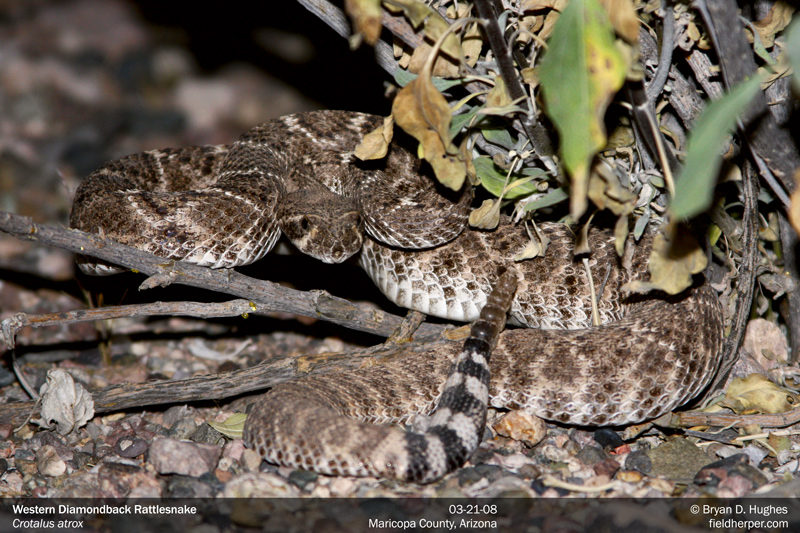
#2:
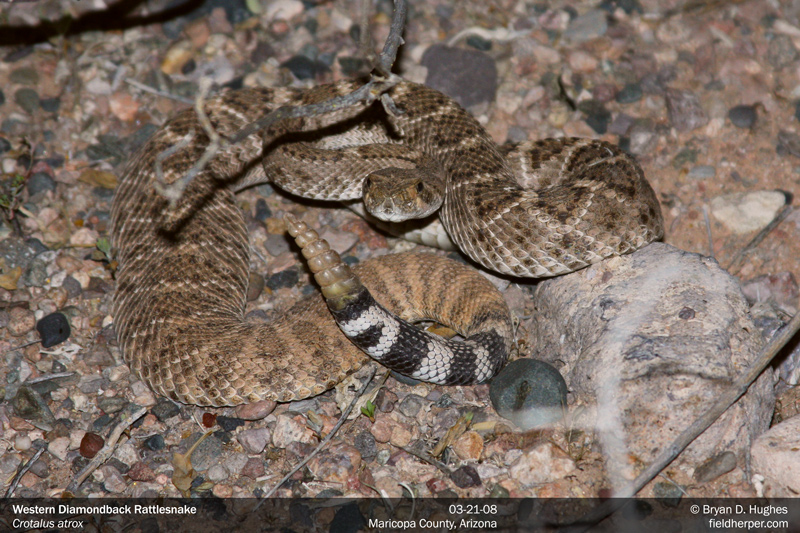
A pretty, young Mojave Rattlesnake (Crotalus scutulatus) with an X on the tail:
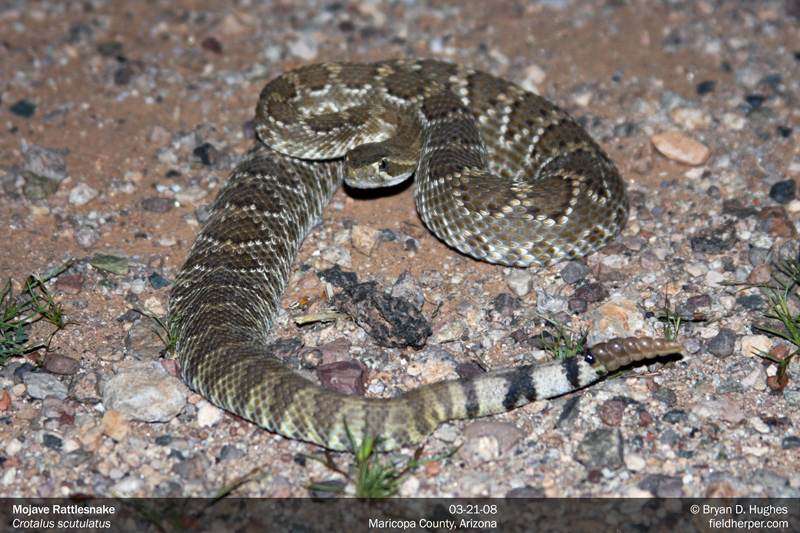
A Very Calm Adult Sonoran Sidewinder (Crotalus cerastes cercobombus):
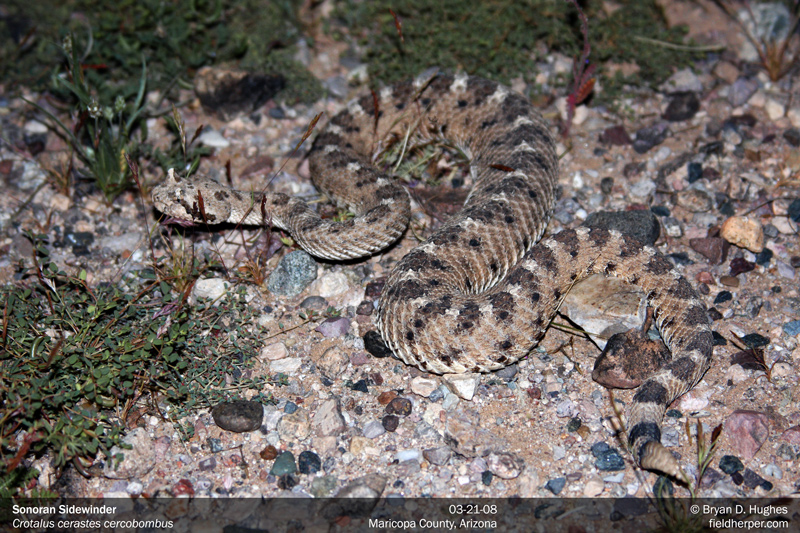
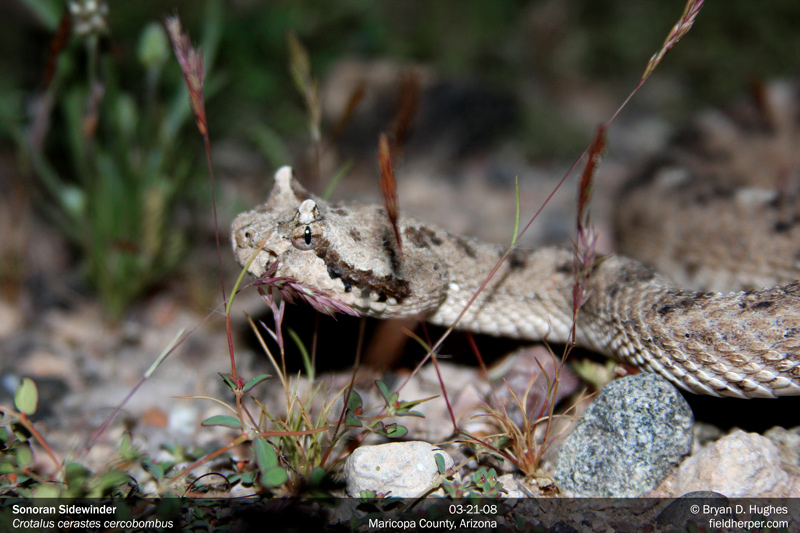
I’ve got some night-time practice to do with my camera, but otherwise a productive start to the year.
Tags: atrox, cerastes, Crotalus, Crotalus atrox, Crotalus cerastes, crotalus cerastes cercobombus, Crotalus scutulatus, Diamondback, mohave, mohave rattlesnake, mojave, mojave rattlesnake, rattlesnake, scut, scutulatus, sidewinder, sonoran sidewinder


I only found out a couple of years ago we have Mojave Rattlesnakes here. After watching Venom ER on Animal Planet the years it was aired, I’m more nervous about encountering them than the Diamondback. I understand the different way each of the two snake venoms work on us (Mojave is more dangerous, correct?) but is it true the Mojave can be aggressive without provocation? Also…your photo shows slightly different coloring on the Mojave…not as reddish as Dbacks. Is this typical?
Thanks for keeping us educated!
Before I start, please keep in mind that my knowledge of venom is limited to what I have read and discussed. I have (thankfully) no first-hand knowledge.
It is very difficult to really qualify “dangerous” when it comes to snake bites due to the number of factors at play. Venom yield, aggression level and size of the individual snake, where the bite occurs, the health of the victim, etc., all play a role. If venom were solely looked at in comparative bites, then yes, in most cased the neurotoxin from a Mojave will be more trouble. There are also different builds of toxin within the species which vary locally. There are two types of peptide that make up the venom, the combination of which is very much stronger than one individually. To take a bite from a Mojave in Cochise county where both exist, for example, could be much worse than in La Paz, or anything that would take place in California (where Venom E.R. is filmed) where the combination AB venom is not found. While a bite from a Diamondback would primarily destroy tissue locally, a neurotoxic bite can result in things like muscle and respiratory failure. Either way, however, the actual death rate is very low in the U.S.
In my own experience it would seem that Mojaves tend to jump into action a little faster and with a bit more enthusiasm than the majority of Diamondbacks, but it of course depends on the individual. They will not attack without provocation; definition of provocation being subjective, sometimes just meaning “in my area.” To be then objective, it would make the species less dangerous in my eyes, by being more apt to kick up a warning rattle well in advance. As long as it is heeded, no problem will come. If you’re like me and are inclined to go mess with them anyway, I always give them a little more room. Between diamondbacks and mojaves, the only one to strike at me from a stop-start that I remember off-hand are diamondbacks.
Mojaves are quite variable in our state. West of Phoenix they tend to be a green to tan color (hence the “Mojave Green” name people like to use). To the East and South, they are more highly contrasted, and in the extreme South East they can be very dark and vivid. I have some of these individuals posted awhile back in the blog, and I think I have a post scheduled with one that was nearly black … dark enough at the time that I didn’t know what it was for the first few minutes of the encounter.
They tend to like sandy flats, so you’re less likely to run into one running around in the McDowells. On the right night in other parts of the state, however, they’re so numerous that you just get sick of seeing them after a few hours.
Thanks for the in depth response, Bryan! I now understand why I haven’t seen one yet. Also very interesting regarding all the factors related to the strength of venom. All in all, staying clear is obviously the best course of action when encountering either snake. Something (as a photographer) I have a hard time doing 🙂